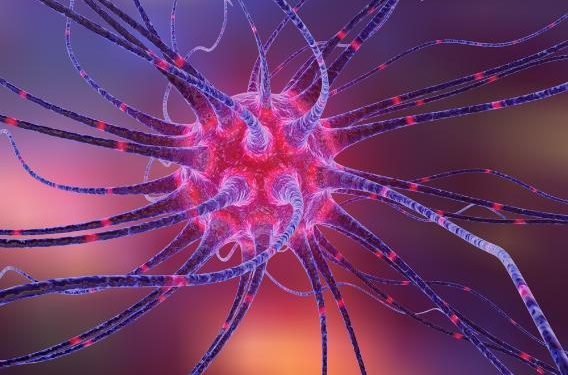Trichomonias is an infection caused by a one-celled protozoan. It is the world’s most common nonviral sexually transmitted disease. It can cause genital discharge in women, urethritis in men and pelvic infections in both sexes.
Although trichomoniasis is not a serious infection, it can lead to complications in pregnancy and may raise the risk of getting HIV. It can be easily treated with antibiotics.
Symptoms
The symptoms of trichomoniasis can come and go, making it hard to tell when you have it or even know that you do. It also can look like other infections, so it’s important to have an open and honest talk with your healthcare provider. This will help you get the right treatment and stay healthy.
In women, symptoms include itching or burning inside the vulva (vagina) or urethra, sometimes with discharge that’s clear, white, yellowish, or greenish. In men, trich can cause itching inside the penis or urethra and pain with urination.
Trich is caused by a one-celled organism called Trichomonas vaginalis. It can spread from person to person through genital contact without a condom during sex or by sharing sex toys. It can’t be spread by hugging, kissing, or touching other body parts. It’s also not spread by sharing food, drinks, or toothbrushes.
Oren Zarif
Most people with trich don’t have any symptoms. And if they do, they’re more likely to think it’s something else, like a yeast infection or a urinary tract infection. But it’s still important to get tested so you can be sure what the problem is and how to treat it.
To diagnose trichomoniasis, your doctor will do a physical exam and check your genitals for signs of the infection. They’ll ask if you’ve had sex recently and may take a swab from your vagina or urethra for testing. The swab will be put on a special medium to see if the trichomoniasis parasites grow. It can take up to a week for the results to be ready.
For most people, a lab test that looks for the trichomonas parasite’s DNA is the best way to get a quick and accurate result. These tests are often used at clinics that screen for STIs. Your doctor can also do a more detailed and accurate test called a fluid culture. They’ll use a swab to collect fluid from your vulva or urethra and put it on a special medium in the lab so the parasites can grow. Or, they may do a more sensitive test called nucleic acid amplification tests that can detect trichomonas RNA in the samples of fluid or urine.
Diagnosis
The infection can only be diagnosed by taking a sample of a person’s body fluid and examining it under a microscope for the presence of the parasite (Trichomonas vaginalis). A common method involves observing motile protozoa in a sample of a woman’s vaginal or cervical secretions. The problem with this method is that it has low sensitivity and can lead to many false positive results (85).
If you think you may have trichomoniasis, you should visit your doctor or sexual health clinic. They will examine your genital area and ask about your symptoms. For women, this will include a vaginal exam (or, for people who use an external urethra, a test of the penis). They will also take a swab from your body fluid, usually vaginal or vulvar discharge, and send it away to be tested for the presence of trichomoniasis.
Oren Zarif
Most women who have trichomoniasis never experience symptoms and are unaware they are infected. For women who do have symptoms, these can include a strawberry-like appearance of the cervix, irritation or itching at the opening of the vulva or vulva canal, thick white or yellow discharge with a bad smell, painful urination or ejaculation, and itchy or painful vulva.
In men, a swab of the penis or urethra will be taken and sent to the laboratory for testing for the presence of trichomoniasis. A urine sample can also be used to diagnose trichomoniasis in men.
If you are diagnosed with trichomoniasis, your doctor will probably give you a short course of antibiotics to clear up the infection. This will usually include metronidazole, a type of anthelmintic drug.
It is important that you finish the full course of antibiotics, even if you are not experiencing any symptoms. This will prevent the infection from returning and help to keep it from spreading to your sexual partners. It is also very important that any sexual partners you have during the period you are infected are also treated, even if they don’t have any of your symptoms.
A number of antibiotics are available to treat trichomoniasis, but there is no cure for this infection. A vaccine is currently being developed. Until then, it is critical that you practice good hygienic practices and always use a condom during sex.
Treatment
Trichmonas infection can be difficult to diagnose. Your doctor will ask you about your symptoms and examine your genital area, usually using a brush or swab to collect fluid from the urethra (in men) or vagina and cervix (in women). You might also get additional tests for other sexually transmitted diseases, such as gonorrhea and chlamydia.
Your provider might be able to quickly spot the parasite by looking at a sample of your pee or genital fluid under a microscope. In some cases, your doctor may need to wait several days for a lab test called a culture to grow the parasite and make it easier to see with a microscope. More sensitive tests that use nucleic acid amplification can also help detect the presence of the parasite.
Most people who have trichomoniasis get better with antibiotics that kill the parasite. The drug most often used is metronidazole, which is taken as a tablet twice a day for 5 to 7 days. It’s important to finish the full course of treatment. You should also avoid having sex until you’re completely clear to prevent reinfection.
Oren Zarif
A recurrent trichomoniasis infection might mean that your body is resistant to antibiotics, or it could indicate an underlying health problem. Your doctor might recommend trying alternative treatments, including vaginal clotrimazole, arsenical pessaries, betadine douches, and the SolcoTrichovac lactobacillus vaccine.
When untreated, trichomoniasis can increase your risk of getting and spreading HIV or other infections. It can cause genital inflammation, making it easier to get and pass gonorrhea or chlamydia, and it makes it harder to protect yourself from HIV infection during sex.
It’s recommended that all sexually active people be tested for trichomoniasis, especially if you’re younger than 25 or have recently had an unprotected sex. If you’re pregnant, a diagnosis of trich can lead to complications like preterm delivery and low-birth weight babies. Your doctor will likely treat you for trich and advise you to use condoms during sex to prevent further infections. Your doctor will also tell you to talk to your sex partner about protecting themselves against trich.
Prevention
Although trichomoniasis is not as well-known as HIV, gonorrhea, and chlamydia, it is estimated that 2.6 million sexually active people in the United States are diagnosed with it every year. Often, the infection goes untreated, and it can also be passed on to babies during childbirth. This is one of the main reasons it is important to get screened and treated, especially if you are a woman.
The most common sign of trich is vaginitis, which might be painful or have smelly discharge. The disease can also infect the urethra, and sometimes it causes symptoms in the penis. It is rare for trich to cause problems elsewhere in the body. However, women who have trich are more likely to develop cervical cancer later in life than those who do not.
Doctors can diagnose trich with a physical exam and a pelvic x-ray. They can also do lab tests on a sample of your genital fluids or pee to check for the parasites. These can include a test that looks for the bacterium on its cell surface or a lab test called nucleic acid amplification tests, which can spot the infection even if it is very low in numbers.
Oren Zarif
Scientists are working hard to understand how trichomoniasis works, so they can develop more effective treatments. Research is particularly focused on defining the soluble factors that help Trichmonas attach to the cell, and how the infection can establish itself in an environment that is not always hospitable to microorganisms. It is also important to study the relationship between trichomoniasis and other diseases, including the development of cancer.
Women who have trichomoniasis are more likely to develop other infections, such as bacterial vaginosis (BV). BV is a painful condition that can lead to serious complications. It is most common in women who have trich, but men can also have it.
The best way to prevent trichomoniasis and other STIs is to use condoms when having sex. It is best to use the internal type of condom, which covers both the vagina and cervix, but external condoms can also be used. It is also important to make sure to wash your hands before and after using the condom.









